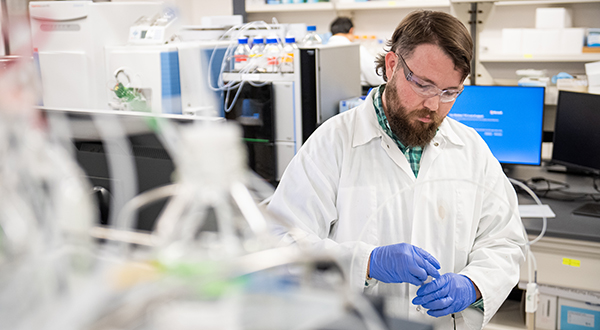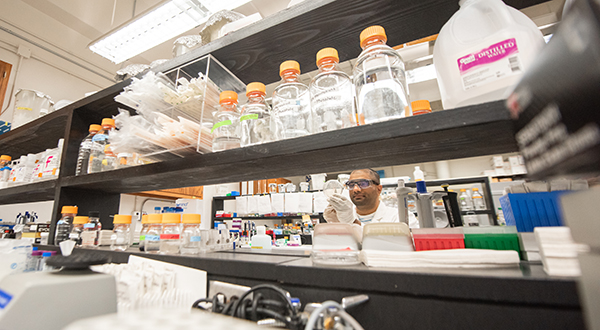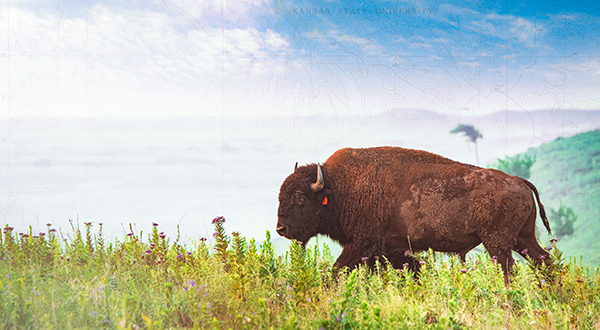How a K-State researcher cracked the code of livestock pain relief
Hans Coetzee, university distinguished professor of veterinary medicine, receives National Academy of Sciences 2025 Prize in Food and Agriculture Science.
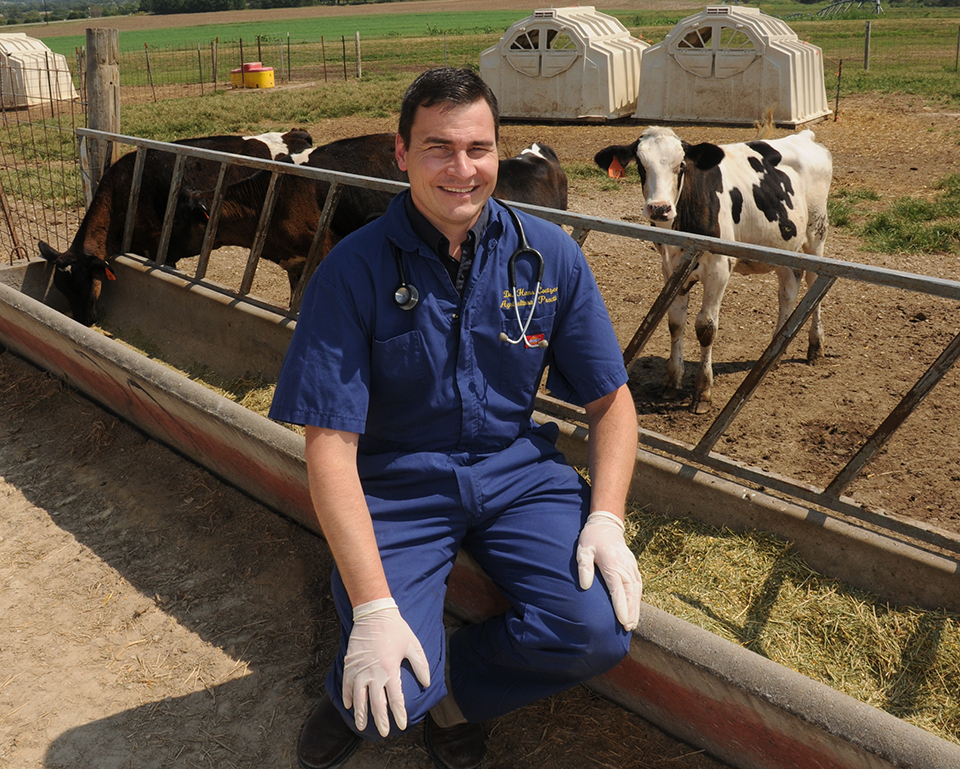 For much of his career, Hans Coetzee and his team of researchers have sought ways to identify, validate and address pain in livestock. | Download this photo.
For much of his career, Hans Coetzee and his team of researchers have sought ways to identify, validate and address pain in livestock. | Download this photo.
 By Rafael Garcia
By Rafael Garcia
K‑State News and Communications Services
Friday, Feb. 7, 2025
MANHATTAN — No words are needed in the language of pain.
"Ow" and "ah" are universally understood, as are a yelp or a cry. A grimace or a rubbed hand over a sore spot or ache convey a similar message.
But like any language, the expression and understanding of pain is a learned form of communication — one that's especially difficult to pick up across species.
For farm animals, though, Hans Coetzee has cracked the code.
Coetzee, university distinguished professor of animal welfare in Kansas State University’s College of Veterinary Medicine, has dedicated much of his career to assessing and relieving pain in livestock species. His work has been instrumental in clearing the way for the first regulatory approval of livestock analgesics, or pain relief medicine, that has eased the pain of millions of animals.
For these contributions, the National Academy of Sciences has awarded Coetzee the 2025 Prize in Food and Agriculture Science — an award that recognizes research by a mid-career scientist at a U.S. institution who has made an extraordinary contribution to agriculture or to the understanding of the biology of a species fundamentally important to agriculture or food production.
"Through his innovative work, Coetzee has not only advanced scientific understanding but also delivered creative yet implementable solutions to complex challenges that benefit animals, livestock producers, and society," the prize citation states. "By bridging the gap between basic science and practical application, he has fostered collaboration with policymakers and industry stakeholders and inspired the next generation of researchers."
Coetzee will be formally honored at a ceremony in April at the National Academy of Sciences' annual meeting in Washington, D.C., where he will also receive a medal and a $100,000 award as part of the prize's endowment from the Bill & Melinda Gates Foundation and the Foundation for Food and Agriculture Research.
“I feel incredibly blessed and honored to have the opportunity to do this work,” Coetzee shared. “I never expected it would lead to this recognition. I am especially thankful for the tremendous support from my family, K-State and the many colleagues, students and livestock producers who have collaborated with us.”
Coetzee has been previously recognized for his efforts to improve animal welfare. He received the 2017 Animal Welfare Award by the American Veterinary Medical Association and the World Veterinary Association's Global Animal Welfare Award, also in 2017.
He also received Ruminant Well-being Awards at the World Buiatrics Congress in 2018, and in 2022, the K-State Alumni Association awarded Coetzee its Iman Outstanding Faculty Award for Research.
Addressing an unmet pain management need
Coetzee's passion for animal welfare dates back to his time as a child at his family's dairy in rural South Africa where he often prepared cattle for show as part of the country's 4H program.
"Even then, I recognized that in raising farm animals, our primary focus was ensuring their health and productivity," Coetzee said. "But we weren't necessarily paying as much attention to treating painful conditions. This was an unmet need in agricultural production."
After Coetzee briefly worked as a mixed animal practicing veterinarian in Northern Ireland, he knew he wanted to spend more of his career working to answer some of the biggest challenges livestock producers face with their animals, especially pain management.
Human pain medications, such as aspirin and ibuprofen, are called nonsteroidal anti-inflammatory drugs, or NSAIDs. For farm animals, some NSAIDs such as flunixin have been approved for many years to reduce fever. In the U.S., however, these drugs had not been labeled for pain relief.
“Regulatory authorities require validated methods for assessing pain in specific species,” Coetzee explained. “Therefore, early in my career, my research focused on identifying reliable endpoints to demonstrate the effectiveness of pain relief medications.”
Coetzee and his team needed to understand and recognize pain in cattle, but this proved challenging. As a prey species, cattle have evolved to conceal signs of pain, so that predators can't key in on vulnerable individuals. Additionally, research has shown that behavioral observations often vary based on a person's background and experience with animals, making them unreliable as consistent validators of pain.
"This approach is at the heart of our land-grant mission. As we advance the Next-Gen K-State strategic plan, this type of research is key to meaningful outreach and collaboration, directly impacting animals and producers in Kansas and beyond.”
And, according to researchers, outcomes such as measuring an increase in heartbeat or blood hormone levels — such as cortisol — may reflect the stress of pain or may also indicate the effects of handling or other non-pain sources.
"In assessing pain, we take a comprehensive approach by examining behavior, physiological and neuroendocrine markers,” Coetzee said. "Our goal is to paint a complete picture of how these animals respond to pain, and more importantly, how our pain relief drugs are affecting those responses."
At K-State, Coetzee and his team worked with College of Veterinary Medicine alumnus Kelly Lechtenberg, a veterinarian whose company, Midwest Veterinary Services, Inc., specializes in drug approval work for veterinary pharmaceutical companies.
In collaboration with Lechtenberg, the team validated a pressure mat system to accurately measure subtle changes in how animals walk as a potential pain indicator.
"We combined Kelly’s regulatory expertise and infrastructure with the pressure mat technology we used at K-State to validate gait analysis as an endpoint for measuring pain associated with lameness," Coetzee said. "Those data were then used as part of the FDA approval for a pain relief drug called Banamine Transdermal, which was the first drug specifically approved for pain control in a food animal."
Paving the path for better livestock pain relief
Since that foundational work, Coetzee and others have continued to develop and prove the efficacy of pain management drugs for livestock in other livestock production practices and processing.
“As a society, we have an ethical obligation under our social contract with animals to minimize pain and distress,” Coetzee emphasized. "Livestock producers have a special bond with their animals and are dedicated to providing a comfortable, safe, and healthy environment for them to thrive. Our work to support the approval of pain relief drugs will provide ranchers with an essential tool to advance the welfare of the animals in their care.”
Some veterinarians already use drugs approved for humans, such as K-State's patented oral administration of meloxicam, for off-label pain relief in farm animals. However, Coetzee's research team and collaborators seek to continue refining and validating pain biomarkers for various indications to clear the way for formal regulatory approval as pain management tools.
Since summer 2024, Coetzee has also served as interim vice president for research at K-State, overseeing the university’s more than $200 million research enterprise.
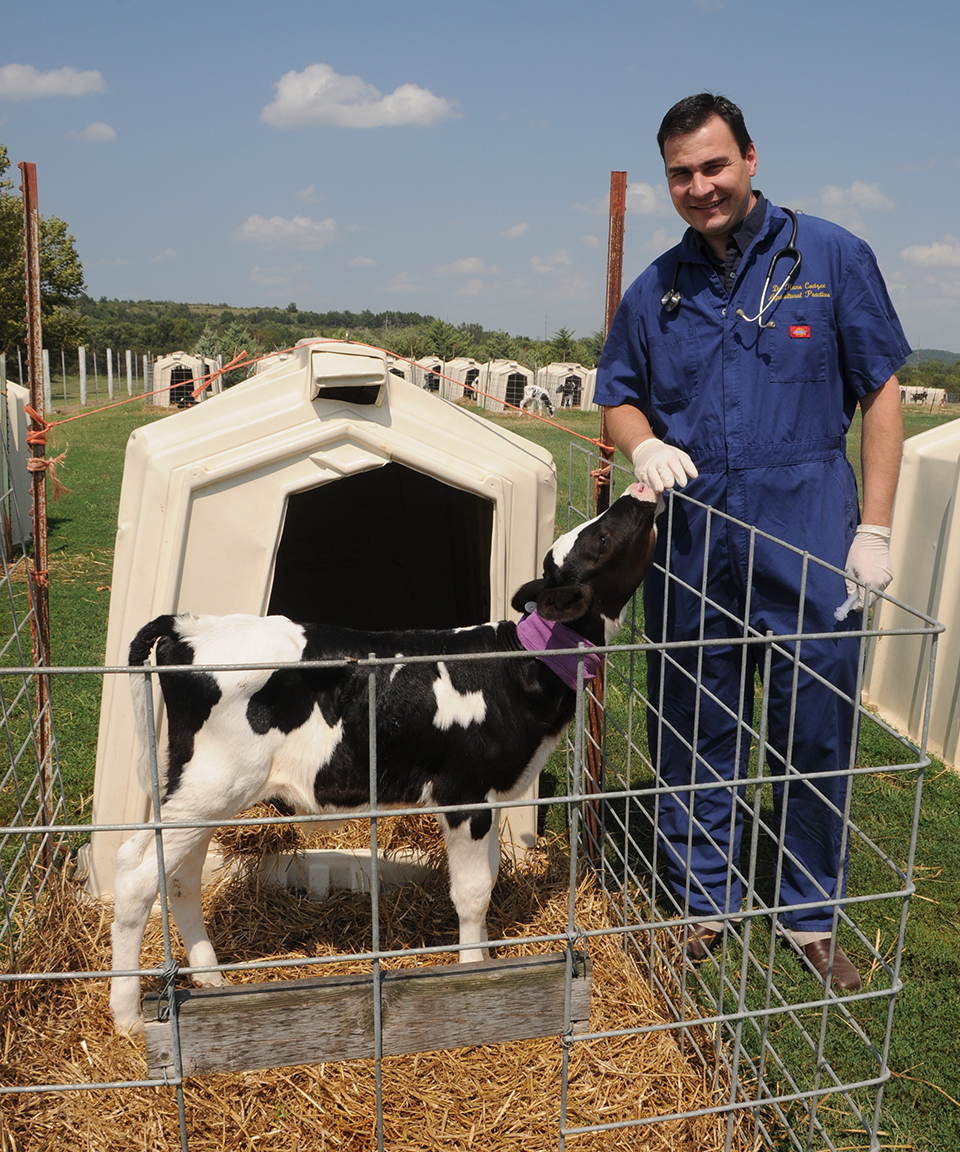 “As a society, we have an ethical obligation under our social contract with animals to raise them free from pain and fear,” said Hans Coetzee, university distinguished professor of animal welfare and interim vice president for research at K-State. | Download this photo.
“As a society, we have an ethical obligation under our social contract with animals to raise them free from pain and fear,” said Hans Coetzee, university distinguished professor of animal welfare and interim vice president for research at K-State. | Download this photo.
Despite the demands of his new role, he has continued his research as he is able, regularly working with his graduate research assistants.
The job has also given him a greater appreciation for the transformational role of land-grant institutions like K-State as educational institutions that prepare the next generation of researchers and scientists and as innovation drivers in their communities and in the world.
"Research often begins at a fundamental level, which is critical because it lays the foundation to translate that research into real-world application,” Coetzee said. “In order to translate our research into field applications, we collaborate with producers who are eager to engage with K-State. This approach is at the heart of our land-grant mission.
"As we advance the Next-Gen K-State strategic plan, this type of research is key to meaningful outreach and collaboration, directly impacting animals and producers in Kansas and beyond.”
Pronouncer: Coetzee is Coat-SAY-uh.
Written by: Rafael Garcia, 785-532-2535, rafagarc@k-state.edu
Media contact
Division of Communications and Marketing
785-532-2535
media@k-state.edu
